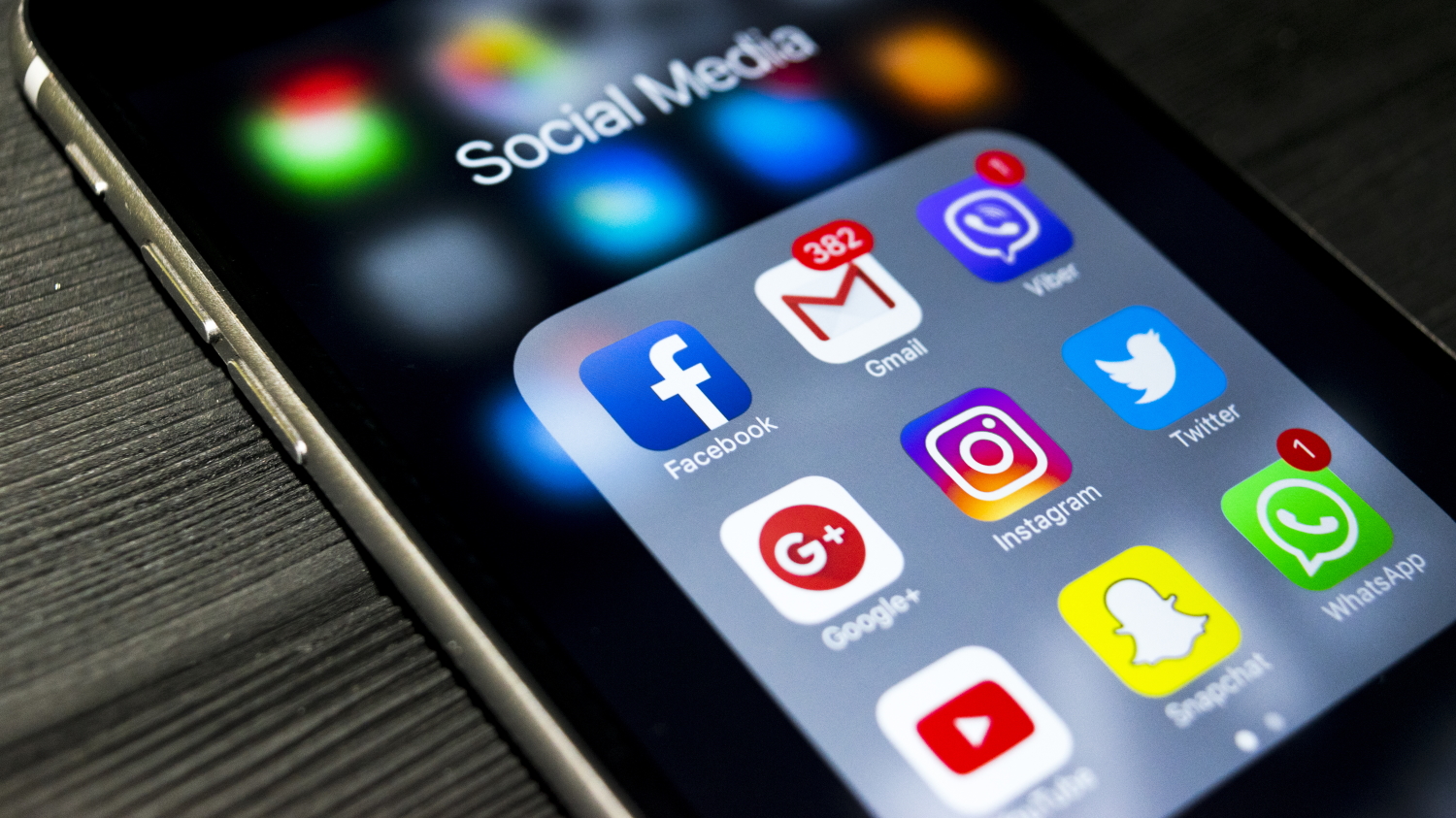How much data do I need? A guide to data usage on the most popular phone apps
Netflix, Spotify, Disney+ - they all use data but how much?

How much data do I need? It's a daily question we all ask. When you’re on a packed train home and desperate for distraction, so you pop your headphones in and stream some Netflix. Minutes later and your mobile provider delivers the solemn news that “you’ve used up all your inclusive data”.
The future looks bleak. You either end up incurring overage charges, paying for more data, or – God forbid – having to read one of those book things! This dilemma can be averted if you simply plan from the start just how much data is needed.
Networks like Verizon or EE in the UK offer a range of plans to suit every budget and circumstance: from the smallest 500MB of data – for those who only dabble in the occasional Google search and Google Map expedition – and rising incrementally before peaking at the big Unlimited, which is ideal for UHD-streaming Netflix fans.
For those hankering after the most cutting-edge handset like the iPhone 11 Pro or Samsung Galaxy S20 Plus, the question of "how much data do I need" will be a more serious one considering the higher prices.
As smartphone capability increases and 5G is implemented in greater numbers of territories, the outcome will be vastly improved speeds and greater connectivity between devices. Expect to be doing a lot more with your phone soon and using even more data.
How much data do I need?
That’s the million-dollar question. You should start by considering how much data you are currently using each month. Do you find yourself purchasing add-ons every few weeks, or are you regularly losing a surfeit of gigabytes? The general consensus for data usage suggests 2 GB for occasional email and social media use; 3-4 GB for Spotify devotees and Instagram fans, and at the very least 6-8 GB for hardcore streamers of Netflix and other HD Video-content.
Of course, these are only estimates and the amount of data you consume will depend on a number of factors, such as the type of content you stream. We’ll touch on some of these considerations in this guide to help solve the most pressing quandary of modern life: “how much data do I need?”
How can I get more data?
If you're here because you find yourself constantly out of data, waiting patiently for the next load to come in, you might be now thinking "How can I get more data?"
Most countries will simply allow you to obtain more data in your contract but your best chance is to hold out until you finish your contract and get something with more internet. We've listed some key guides for getting said data in different countries below:
UK:
- Mobile phone deals
- SIM only deals
- Unlimited data SIM only deals
- iPhone deals
- SIM-free phones
US:
- Verizon iPhone deals
- Unlimited data SIM plans
- Unlocked mobile phones
Australia:
- Australian phone deals
How much data does Netflix use?
Netflix has provided some intel regarding the amount of data needed to stream video on their platform, based on the length of time spent watching and selected video quality, e.g. SD (Standard Definition), HD (High Definition) or UHD (Ultra-High Definition):
- 1-hour SD content = 1GB
- 1-hour HD content = 3GB
- 1-hour UHD content* = 7GB
- 4 hours in 'auto' mode = 1GB
- 6 hours in 'Save Data' mode = 1GB
Say, for example, you like some laughs on your commute to work and stream a 20-minute episode of The Good Place every day in SD. Factor in some idle web surfing, and five episodes in you’ve obliterated a 2 GB data plan by the end of the week; watch one two-hour movie and you’ve used it in under a day.
If you love streaming high-quality video – which gobbles data like crazy – you’re best served by a plan of at the absolute least 10GB. This would allow you to enjoy one 50-minute, SD episode of Lucifer during your lunchbreak for nearly a month. Consider an Unlimited plan, however, if you’re a film afficionado without a WI-FI code or a boxset binger.
* Source: Wirefly
How much data does Disney Plus use?
Considering it's the new kid on the street - Disney Plus - is still in its early stages, there are no exact figures available for how much data it uses. Of course, we would expect it to eat up similar amounts to both YouTube and Netflix but what about exact numbers?
Fortunately, the guys and girls at Reviews.org and WhistleOut have run some of their own diagnostics, the results of which are below:
- 30 minutes HD content = 1.1GB
- 1-hour HD content = 2.2GB
- 1-hour 4K or HDR content = 5.1GB
- 1-hour in 'save data' mode = 1GB
Disney Plus is set to automatically provide the best possible video quality. Therefore, if your internet connection and handset is top-notch, then you can watch The Mandalorian online without a WIFI connection and use up 25GB of data; if you adjust to ‘Save Data’ on the app, then only 5 GB. Regardless, Disney Plus gets through significantly more data than Netflix, and kids could easily eat up 20 GB a month watching Mickey and friends in HD on the drive to school.
How much data does YouTube use?
In comparison with Netflix, the amount of data YouTube consumes is less across all video quality categories. As the below information from WhistleOut helps to demonstrate, whereas one hour of HD content requires 3 MB on Netflix, you’ll get roughly four hours viewing time for the same amount on YouTube:
- 1- hour @ 240p (low-quality) = 96MB
- 1-hour @ 480p (default) = 240MB
- 1-hour @ 1080p (HD) = 720MB
So, if you watch a 30-minute video from your favorite content creator every day on the lowest quality setting, you’ll use up 3 GB a month. That’s pretty reasonable when you look at the rates of data expended by other video-streaming platforms. On a 5GB plan, you’d have megabytes to spare, and be able to stream 20-hours of music via Spotify and browse the socials too.
How much data does Spotify use?
If you’re forever meandering through town with your headphones on blasting through your Discover Weekly, you’ll want to consider how your audio streaming habits impact your data plan. Based on a 3-minute song, WhistleOut details Spotify’s data consumption figures as:
- 2 MB per song (Normal setting)
- 40 MB per hour (Normal Setting)
- 3.5 MB per song (High Setting)
- 70 MB per hour (High Setting)
- 7.5 MB per song (Extreme Setting*)
- 150 MB per hour (Extreme Setting*)
* Extreme setting is only available to Spotify Premium subscribers.
Spotify gives music lovers a lot of data for their dollar. Even on a parsimonious 2 GB plan, you can stream 1000 songs a month with the platform’s automatic setting. Put differently, you could listen to Lewis Capaldi’s Divinely Inspired to a Hellish Extent album (which is 42 minutes long) 71 times, leaving you a slight emotional wreck.
If YouTube is your current default for music on the go, consider swapping to Spotify. Your data should last roughly six times longer.
How much data does Facetime use?
With a camera in every smartphone and traversing the globe increasingly common, video-calling is a great way to keep in touch with loved ones. But is it kind to your phone tariff? The Apple-focused tech website Mactrast break down Facetime’s estimated data-usage as:
- Per minute (video call) = ~3.25 MB
- Per hour (video call) = ~ 195 MB
- Per minute (audio call) = ~2 MB
- Per minute (audio call) = ~ 120 MB
As you can see, using Facetime won’t break the bank. An hourly video-call every week to your elderly Grandparents in Spain, for example, would utilise no more than 800 MB a month, while a 5-minute video call to your bestie every day of January works out at 465 MB. Neither of which should cause consternation. On a 5 GB plan you could additionally watch 4 hours of Netflix (in ‘auto’ mode), stream 500 songs on Spotify, watch four hours of YouTube, and have over 1 GB left for casual web surfing.
How much data does Google Maps use?
The trepidation with which our thumb taps Google Maps when somewhere unfamiliar appears to be unwarranted. The below figures, extrapolated from WhistleOut’s findings*, show the minimal impact the app has on your monthly data allowance.
- Per min = ~ 0.037 MB
- Per twenty-minutes = ~ 0.73 MB*
- Per thirty-minutes = ~ 1.1 MB
- Per hour = ~ 2.2 MB
If you’re driving to a far-flung business seminar or plan to hit the open road for a few weeks, you might consider downloading the required maps beforehand. But even a ten-hour trip with live navigation should only set you back 22 MB. If you make five such journey’s a month, it’s still only 110 MB – the data equivalent of chump change.
NB: avoid satellite view and disable the app’s background data usage to save data. They can drive a spike in its consumption.
How much data does Fortnite use?
Fortnite: Battle Royale - a game that has spread across the world, but how much data does it steal away from you? Surprisingly, not much. Website Fortnite Nexus provides the following answers:
- Initial Download = ~ 2 GB
- 15-minute game = ~ 12.5 MB
- 1-hour gameplay = ~ 80 MB
Unless you perish shortly after entering the game, the average length of a Battle Royale will be 15 minutes. If you complete 4 full sessions every day, you’d use 2400 MB in a month. That’s not bad for around 30 hours of playtime. A 4GB plan should be sufficient if you mainly use your data for Fortnite, listen to a few hundred songs on Spotify, and casually browse the web.
Read more:
- Compare the best UK Smartphones and best US smartphones
Get daily insight, inspiration and deals in your inbox
Sign up for breaking news, reviews, opinion, top tech deals, and more.
Daniel Pateman is a freelance writer, producing articles across the cultural spectrum for magazines like Aesthetica, Photomonitor, The Brooklyn Rail and This is Tomorrow. He also provides text-writing services to individual curators and artists worldwide, and has had work published internationally. His favourite film genre is horror (bring on Scream 5!) and he never tires of listening to Absolute 80s on the radio.
